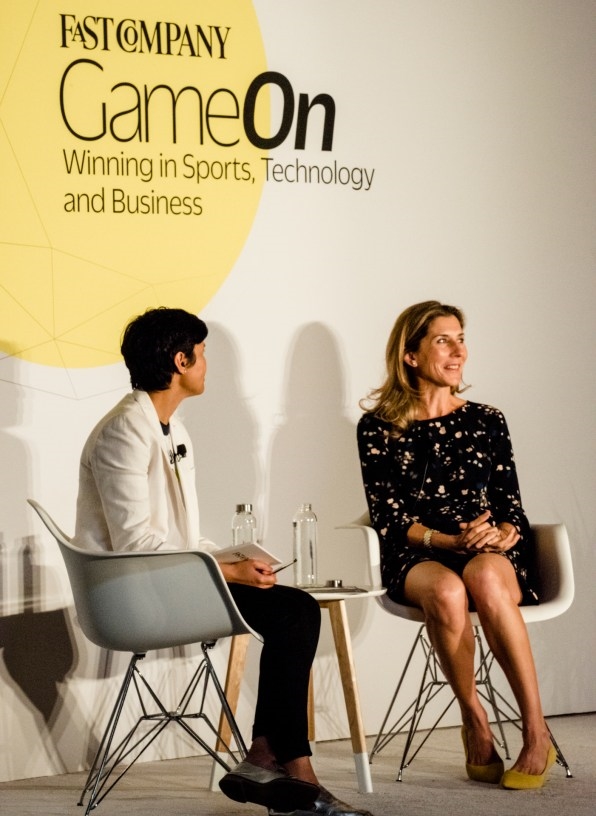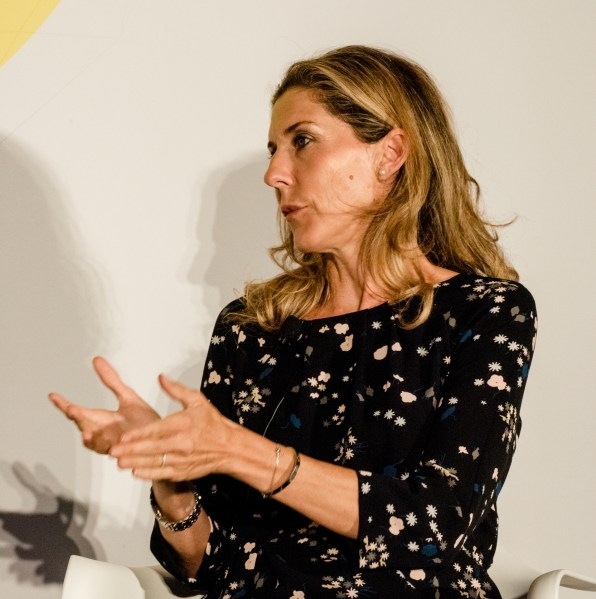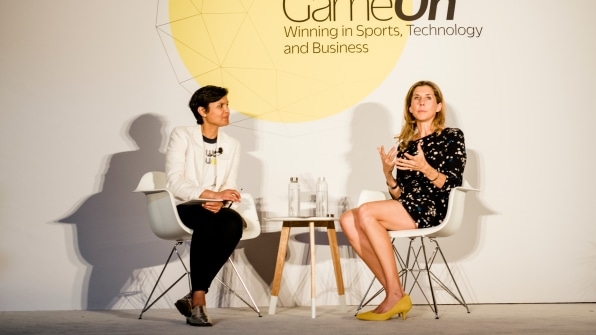When Monica Seles was the top-ranked tennis player in the world in the early 1990s, perhaps the best ever to play the sport, she looked at victory as something of an existential requirement. If she lost a match–which she didn’t do very often–she saw it as a disaster.
Now, at 44, and years removed from her career as a player, she says if she had a chance to talk to her 16-year-old self, she’d caution a little more perspective on what the game really was.
“As a tennis player, you’re known for your last result,” Seles said during a talk at Game On: Winning in Sports, Technology, and Business in San Jose on Monday. “Serena [Williams], if she doesn’t win a Grand Slam, it’s like she failed. But it’s not been a year since she gave birth. In my case, it was, Oh, I didn’t win that tournament. I’d lost one or two matches a year, and that in my brain was a catastrophe. Looking back, it was [just] a tennis match… It shouldn’t have been so black and white. That would be the best advice I’d give myself.”

Seles’s career, of course, was derailed when, as the unquestioned number one in the world, the winner of nine Grand Slam tournaments, she was attacked in 1993 by a deranged fan of her chief rival, Steffi Graf. Although Seles returned to the sport after a long period of physical and mental rehabilitation, she was never the same. “We got cheated,” former number one Martina Navratilova said in 2013 of Seles’s fate. “Monica got cheated, everyone got cheated.”
Speaking Monday in San Jose, Seles recalled the attack and its impact on her. She remembered that it changed who she felt she was as a person, forcing her to look at things in an entirely new way. Unlike trying to recover from a typical athletic injury, which usually has plenty of precedent–and numerous peers with whom to consult about how to do it–Seles had no one to turn to. That was particularly true because on the women’s pro tour in those days, the top players rarely socialized because they were too competitive with each other. “You didn’t want to get close,” Seles says. “You didn’t develop friendships on tour. You didn’t want to get them that edge” on you.
So, only 19 when she was attacked, she suddenly found herself having to confront both physical and emotional scars. “I was on top of the world,” she says, “and the next moment I’m in the hospital.”
Nobody had ever taken so much time off during the prime of their career, she argues. She did eventually return to tennis, but she would never recapture her place atop the sport. She says there were numerous reasons for that, including that she was forced to stop practicing for hours a day because her body simply wouldn’t allow it. Plus, her attacker escaped justice. As a result, she coped with those scars in part with what she calls emotional eating

And because she had gained weight as a result of the eating issues, she was suddenly having to deal with a new tennis world in which players like Anna Kournikova–who never won much, but was considered a star thanks to her Hollywood looks–dominated the conversation. “Now you had to look good while playing tennis too,” Seles says. “The sport was starting to change.”
Having a role model at the time like Serena Williams, who recently returned to tennis in “fierce shape after giving birth” would have been a boon, Seles says.
By the early 2000s, Seles was beginning to be ravaged by injuries, and she says that anytime she gave a press conference she was asked the same two questions–when would she lose the weight she’d gained, and when would she retire. Today, it’s hard to imagine that anyone would ask about her weight like that.
Still, in 2003, her injuries led her to retire. She was forced, for the first time, to look at a life outside tennis–and she realized she wanted more than what the sport had offered. She says her life had been one-dimensional, and acknowledges that that had been “a little unhealthy.”
Spurred in part by the death of her father, she began to shift her priorities and her mindset. She began writing.

Retiring had removed the stress of daily life on the pro tour, and with that the need for stress eating. Paradoxically, she began to lose weight in spite of no longer being a pro athlete, and she began to want to share the story of her life, a story that had begun when she joined the pro tour at 14 and turned pro at 15 when she’d earned enough money playing tennis to satisfy her dad’s demand that she had to be able to afford an education.
She hadn’t planned on publishing her work, but after consulting with a female agent, she talked to a friend in the publishing world who encouraged her to shop the manuscript she’d written around. “‘You have nothing to lose,’” the friend said.
The result was Getting a Grip: On My Body, My Mind, My Self, Seles’s 2009 book. Two young-adult novels followed.
Now as a writer and someone with years to reflect on her career on life, she has a broad perspective of the world and is aiming to become multi-dimensional. But there’s something to be said for the passion she’d felt during those early years–the passion that helped her nurture her world-class talent with endless hours of hard workouts, practice, travel, and competition. Years before, when she was still trying to work her way back onto the pro tour following her attack, she just yearned to get back to playing the game. “Tennis has become a huge business,” Seles says. “You have to play it because you love tennis, hitting that little yellow ball.”
(77)